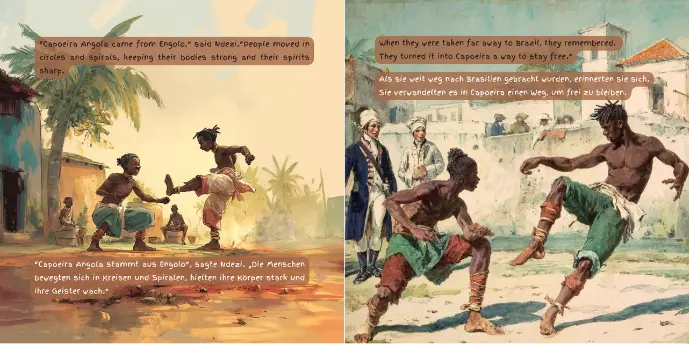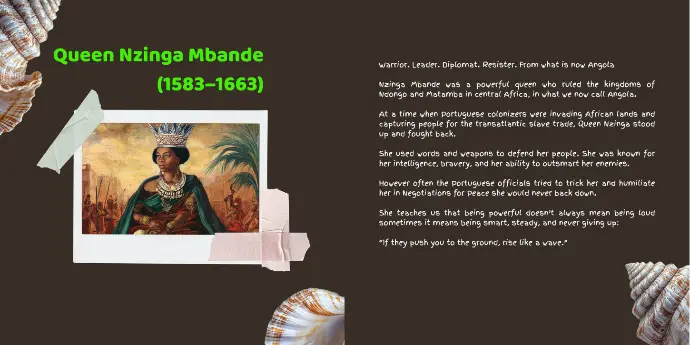This story follows "Lele", a boy with “big feelings” whose emotions often spill out through movement.
Lele’s world moves fluidly between Berlin, Luanda, Salvador, and New York, showing Africa, not as a place left behind, but as a rhythm that never stopped playing.

He learns three Afro-diasporic forms of embodied storytelling:
• Kuduro (Angola): born after civil war, an explosive expression of survival and joy amid hardship.
• Capoeira Angola (Brazil, from Angolan Engolo): a martial art disguised as dance, symbolizing circular resistance.
• Breakdance (U.S.): born from Black and Latino youth who transformed pain and exclusion into rhythm and freedom.
Each dance becomes a historical echo, a way Lele reclaims the body as archive. By the end, he understands that moving is not restlessness, it’s resilience.
What's inside

“They danced anger out of their bones, and joy back into their hearts.”
This mirrors how enslaved Africans used rhythm as joyful resistance; from Capoeira’s hidden combat to Palenque drumming in Colombia.
Matriarchal Wisdom & Queen Nzinga

The interlude on Queen Nzinga Mbande reframes history for children. Nzinga becomes a moral compass, teaching Lele that leadership is not volume but rhythm:
“If they push you to the ground, rise like a wave.”
This links the Capoeira ginga to her name — a symbolic act of reclaiming feminine African strength as central to freedom.

The closing section transforms the story into a teaching tool:
• Movement Exercises (Ginga, Cocorinha, Meia Lua de Frente)
• Reflective Questions (“What does your body feel like when it is too full inside?”)
• Group Rituals (roda circles emphasizing rhythm, respect, play)
This turns Lele Dances the World into both a children’s book and a curriculum in embodied emotional regulation, bridging African heritage with social-emotional learning frameworks.